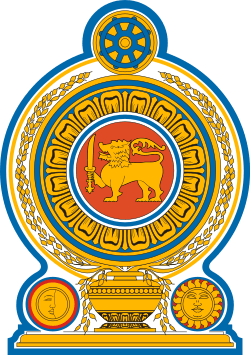Polonnaruwa period
Part of a series on the |
||||||||||||||||||
|---|---|---|---|---|---|---|---|---|---|---|---|---|---|---|---|---|---|---|
| History of Sri Lanka | ||||||||||||||||||
 | ||||||||||||||||||
| Chronicles | ||||||||||||||||||
| Periods | ||||||||||||||||||
|
||||||||||||||||||
| By Topic | ||||||||||||||||||
|
| ||||||||||||||||||
The Polonnaruwa period was a period in the history of Sri Lanka of the Kingdom of Polonnaruwa from 1056 to 1236. The period begins after the Chola conquest of Anuradhapura.
The Kingdom of Polonnaruwa was the second major Sinhalese kingdom of Sri Lanka. It lasted from 1055 under Vijayabahu I until 1212 under the rule of Lilavati. The Kingdom of Polonnaruwa came after the Anuradhapura Kingdom, which was invaded by Chola forces under Rajaraja I. It also followed the Kingdom of Ruhuna, in which the Sinhalese Kings ruled during Chola occupation.
Vijayabahu I (1055–1110), recaptured the whole Island and established Polonnaruwa as the new capital. King Vijayabahu married a second queen from the Kalinga (Orissa) Royal Family, and had a son, Vikramabâhu I, and a daughter, Ratnavali. His sister, Mitta, married a Pandya Prince who had three sons. His eldest son, Manabharana, married Ratnavali. Their son was Parākramabāhu I (1153–1186) Grandson of Vijayabahu I, Prince of Sinhala-Pandyan-Kalinga descent, son of Manabharana and Vijayabahu’s sister, Mitta. He was a very powerful king who was noted for his engineering,[1] naval power, art, culture, Sinhala inscriptions, and even a Tamil edict in Uruthota (Kayts). The Chulavamsa was written by Dharmakirthi, updating the Mahavamsa to include Parakramabahu.
See also
References
- ↑ Broheir, R. L. (1937) Ancient Irrigation Works in Ceylon. 3 vols.